How to Find Alternate Field-Effect Transistors Using Octopart

Choosing the right field-effect transistor (FET) for your circuit - or finding a suitable replacement - can be a tricky task, especially when juggling parameters like current ratings, on-state resistance (R<sub>DS(on)</sub>), gate threshold voltage, and package size.
In Part 3 of our video series, electronics engineer Phil Salmony walks you through the process of finding alternate FETs using Octopart, based on a real-world design example: a micro quadcopter control PCB.
In case you missed it, check out the previous part: Choosing an Alternate Inductor Using Octopart: Step-by-Step Guide.
Context: The Quadcopter PCB Design
This micro quadcopter project includes four compact FETs acting as DC motor drivers. These transistors are not high-power, each motor only draws around a few hundred milliamps, peaking at roughly 1 amp during stall conditions.
The existing design uses a DMG230, which is compact and logic-level controlled, making it ideal for microcontroller-based switching.
But what if this exact part is unavailable? Maybe due to supply chain issues, design changes, or end-of-life status? That’s where Octopart comes in.
What to Consider When Selecting a FET
Before searching for a replacement, it’s important to clarify your design constraints. For this application, the key parameters are:
- Package: SOT-23 (3-pin) to maintain PCB layout
- Gate Drive: 3.3V logic-level signal (no gate driver)
- Current Rating: ≥1 A (preferably with headroom)
- R<sub>DS(on)</sub>: As low as possible to reduce power losses
- V<sub>DS</sub> max: Around 5V, since the motors are powered from a single Li-ion cell
- V<sub>GS(th)</sub>: Must turn on fully with a 3.3V gate drive
Optional considerations include thermal characteristics, reverse recovery, and switching speed, but these are less critical for such a basic application.
Using Octopart to Find a Suitable Alternate FET
Step 1: Navigate to the MOSFET Section
- Go to octopart.com
- Browse to: Electronic Parts → Discrete Semiconductors → Transistors → MOSFETs
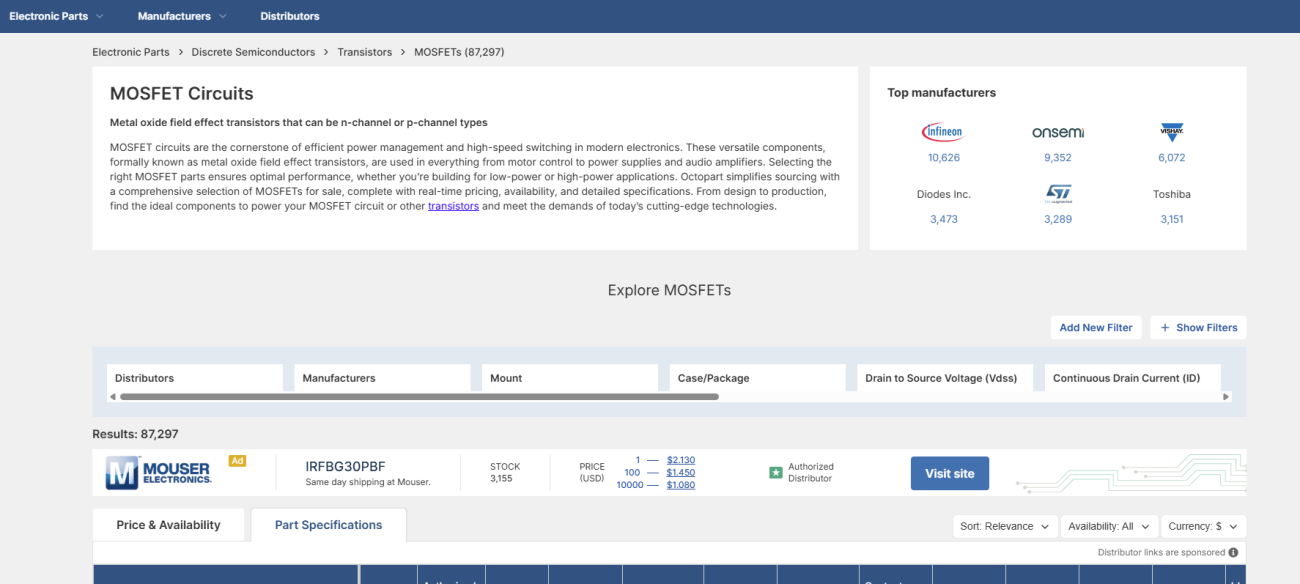
Step 2: Apply Core Filters
On the right side of the page, use the Show Filters button. Start with:
- Package: SOT-23
- R<sub>DS(on)</sub> max: <100 mΩ
- Gate Threshold Voltage (V<sub>GS(th)</sub>): <1V
- Drain Current: ≥1 A
These filters help you zero in on logic-level MOSFETs that match the electrical and mechanical constraints of your design.
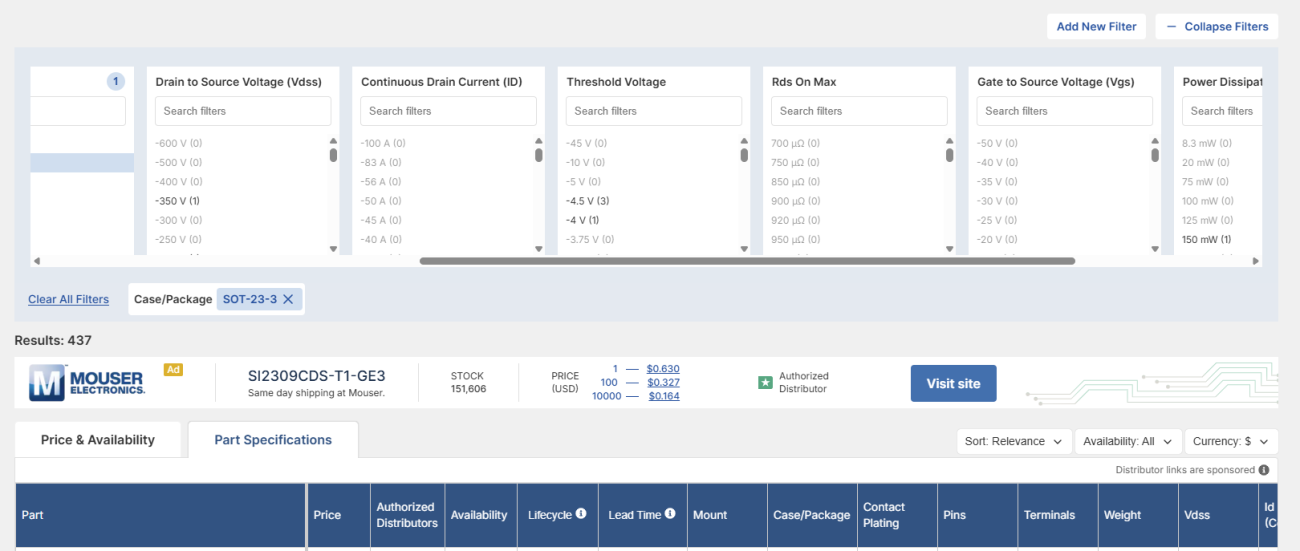
If you'd like to explore additional filters, you can click the “Add New Filter” button on the right-hand side. This opens up a wide range of extra filter options, which are especially useful if you’re looking for something very specific.
For example, when searching for field-effect transistors, you’ll find filters tailored to their unique characteristics, such as breakdown voltage, power dissipation, and more. You can also add filters related to compliance standards and supply chain status, which are particularly helpful when managing sourcing constraints.
Depending on your project needs, applying a combination of these filters can help you narrow down to a precise selection or subset of components that best match your design requirements.
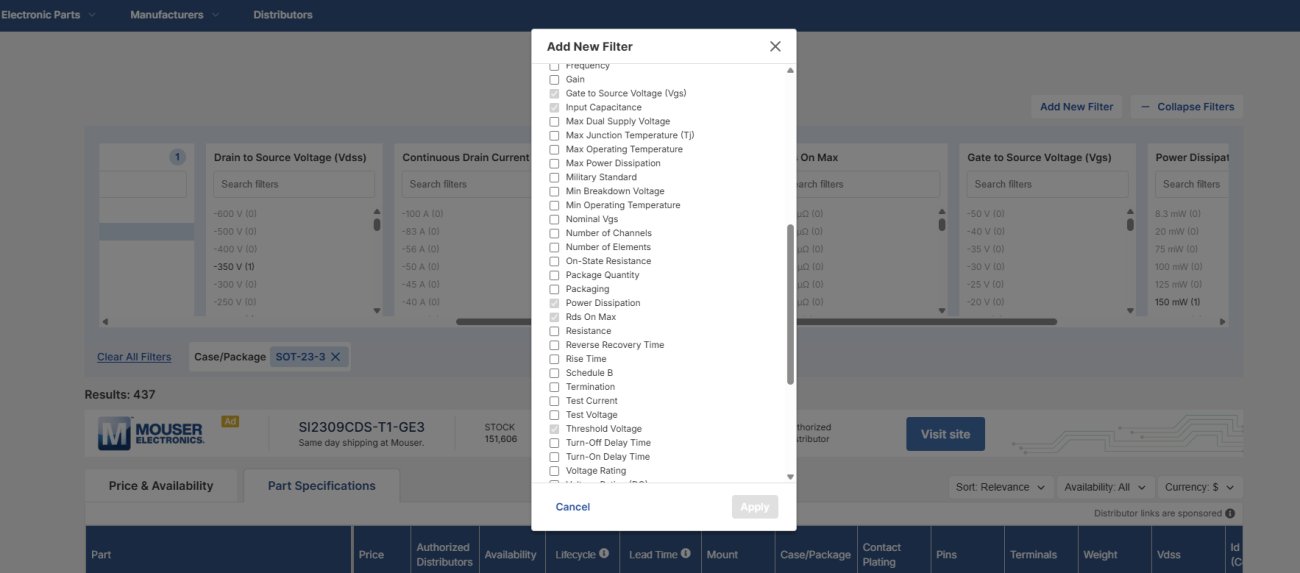
Pro tip: Use the Part Specifications tab for a spreadsheet-like view, where you can enter numeric ranges directly and sort/filter columns such as R<sub>DS(on)</sub>, V<sub>GS(th)</sub>, current rating, and more.
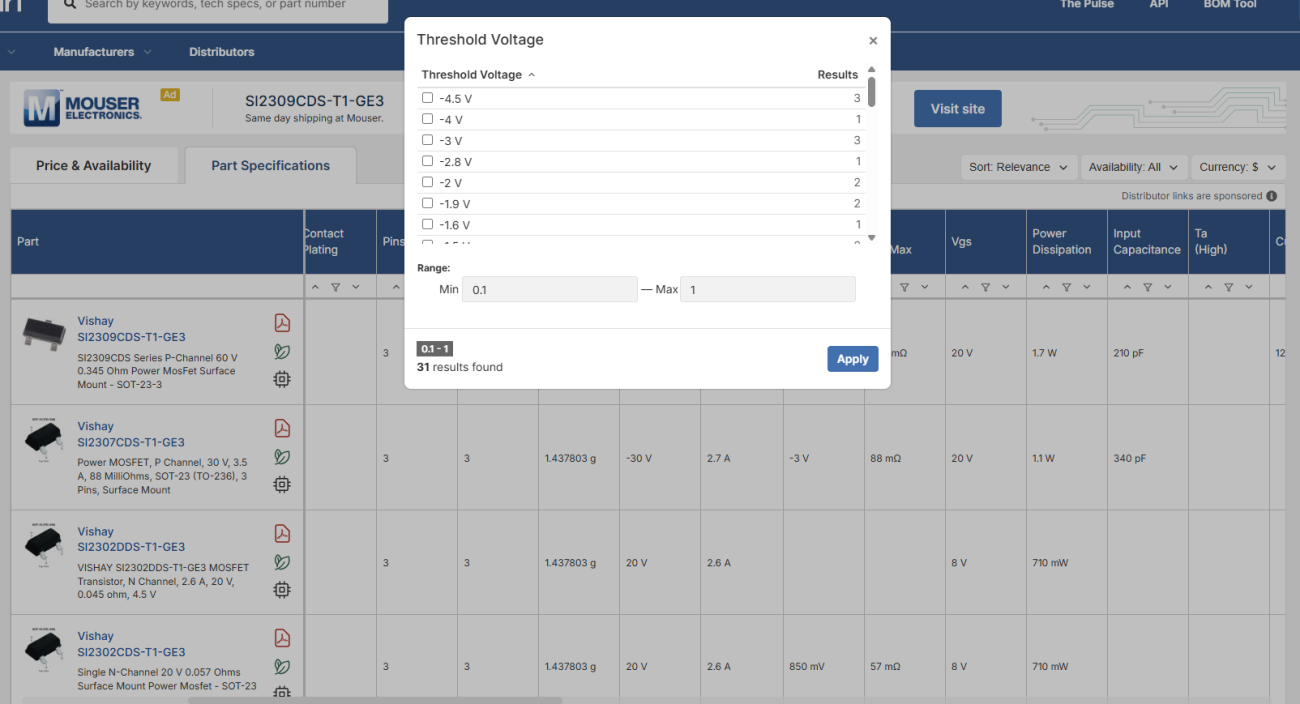
Example: Selecting a Suitable Replacement
Phil demonstrates how quickly you can go from 400+ parts to fewer than 20 using just a few filters.
One standout part is the MGSF2N02ELT1G from onsemi:
- 20V V<sub>DS</sub>
- 3A I<sub>D</sub>
- ~85mΩ R<sub>DS(on)</sub>
- V<sub>GS(th)</sub> ~1V
- Available from multiple distributors and well-stocked
It’s a direct match, with the same package and footprint, and can be dropped into the design with minimal changes (just confirm pinout compatibility).
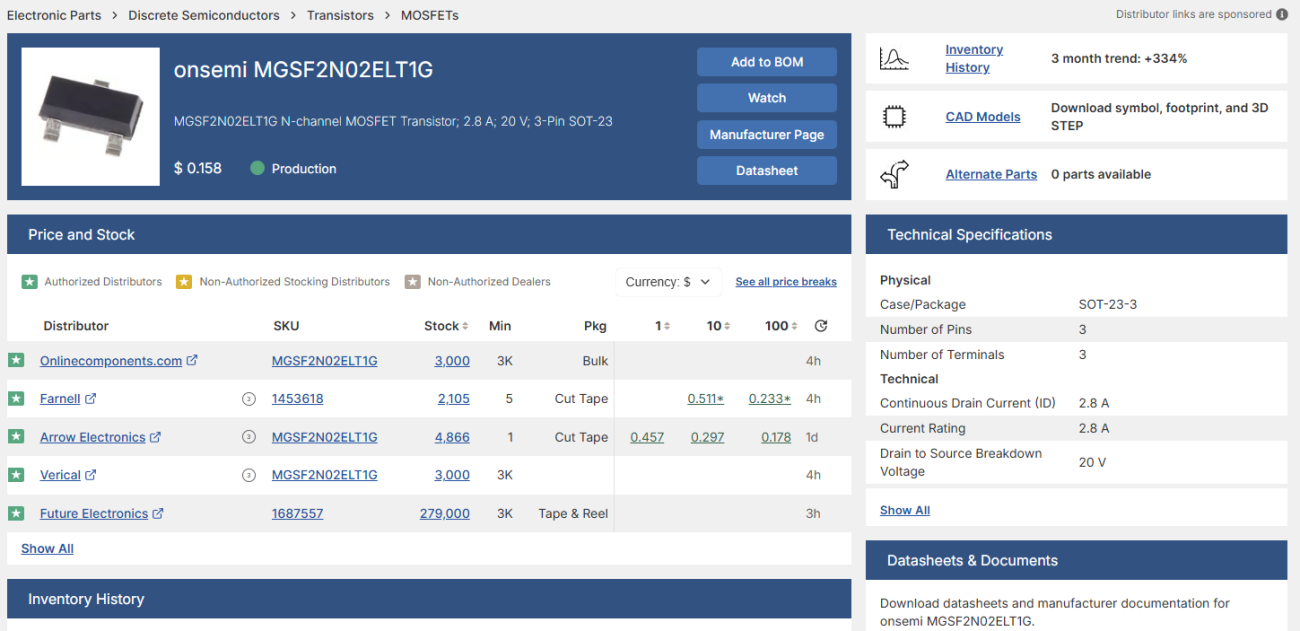
Getting the Part Into Your Design
Once a replacement is identified:
- Use Octopart to download CAD models (schematic symbol, footprint, 3D model).
- Or copy the part number into Altium Designer’s Manufacturer Part Search.
- Place the component, verify pinout, and you're done.
It’s fast, accurate, and helps avoid costly mistakes or delays during prototyping and production.
Conclusion: Octopart Makes Component Replacement Easy
In just a few minutes, you can:
- Define key specs.
- Filter thousands of options.
- Compare pricing, availability, and performance.
- Download CAD assets or import directly into Altium.
This tutorial focused on N-channel FETs, but the same principles apply for P-channel MOSFETs, BJTs, IGBTs, and other discrete components.
Learn how to find alternate microcontrollers in Part 4 of our Octopart video series—watch it here!
Try Octopart today and keep your next project on track—with smarter sourcing from day one.










